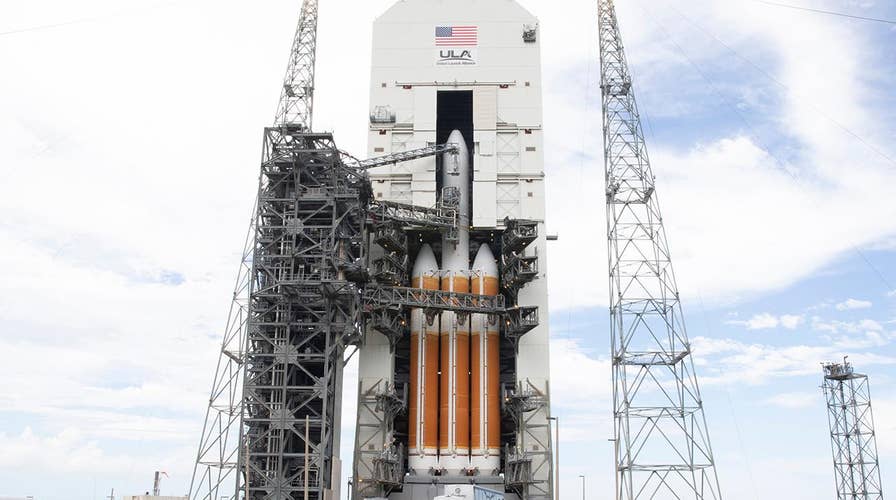NASA’s Parker Solar Probe honors pioneering 91-year-old scientist
NASA’s historic Parker Solar Probe is the space agency’s first spacecraft to be named after a living individual.
CAPE CANAVERAL – NASA’s Parker Solar Probe, which is scheduled to launch early Saturday, is expected to rack up a number of historic firsts for the space agency.
In addition to bringing humanity closer to the Sun than ever before, the unmanned probe will also set a new speed record for a manmade object when it reaches 430,000 mph in 2024. Notably, the Parker Solar Probe is also the first NASA spacecraft to be named after a living person.
The probe is named after pioneering solar physicist Dr. Eugene Parker, who first theorized the existence of the solar wind. The 91-year-old scientist will be present to view the launch when the spacecraft takes off from Cape Canaveral Air Force Station.
NASA'S PARKER SOLAR PROBE: CAPE CANAVERAL PREPARES FOR EPIC MISSION TO THE SUN
The probe will blast off atop a United Launch Alliance Delta IV Heavy rocket from Space Launch Complex 37. The 65-minute launch window for the mission opens at 3:33 a.m. EDT on Saturday.
United Launch Alliance CEO Tory Bruno told Fox News that Dr. Parker’s presence at launch makes the epic mission even more special.
“We feel the weight of responsibility of this mission – this is Dr. Parker’s life’s work and it has culminated in this single mission,” he said. “This rocket, in the span of just a few minutes, less than an hour, will send the spacecraft on its mission out to the Sun to literally fly through the corona – an absolutely amazing technological feat."
WEIRD SOLAR SCIENCE: HOW NASA'S PARKER PROBE WILL DIVE THROUGH THE SUN'S ATMOSPHERE
“If we don’t do this successfully, there really isn’t another opportunity anytime soon,” he added.
The probe, which was designed and built by the Applied Physics Laboratory at Johns Hopkins University, is also carrying more than 1.1 million names to the Sun. In March, members of the public were invited to be a part in the historic mission by submitting their names to be placed on a memory card that the spacecraft will take into space. In May, NASA confirmed that, over a seven-week period a total of 1,137,202 names were submitted.
The memory card also contains photos of Dr. Parker and his groundbreaking 1958 scientific paper on solar wind.
Follow James Rogers on Twitter @jamesjrogers




















